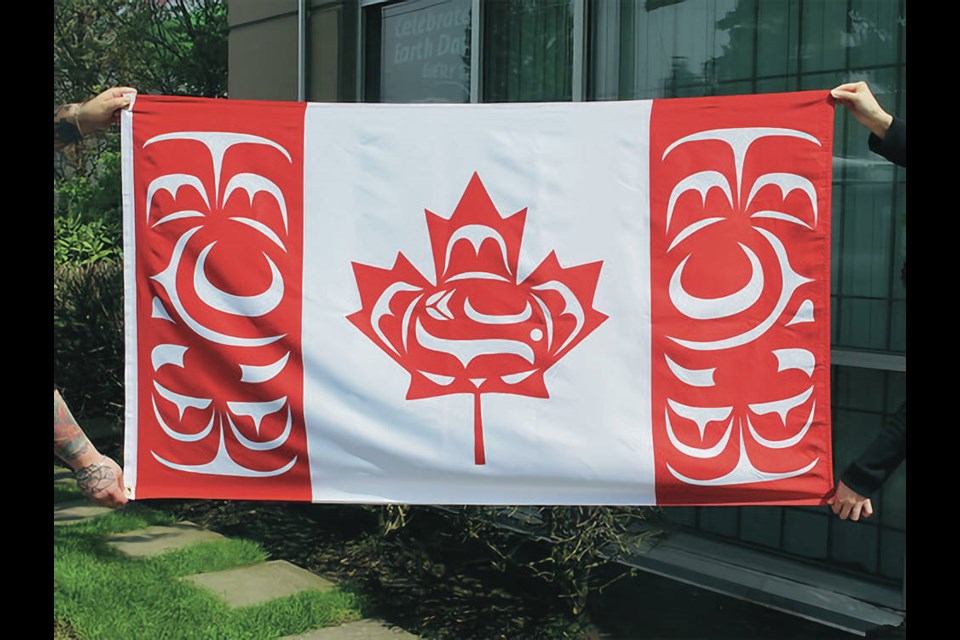The Times Colonist will run a full page, pullout flag again for Canada Day 2021.
But it will be the Canadian Indigenous Flag, the standard designed by Curtis Wilson of the Wei Wai Kum First Nation near Campbell River, who called his now famous creation in 2005 “standing together in support of each other.”
The flag with swimming salmon of the sides and orca inside a maple leaf is significant this Canada Day in the wake of discoveries of unmarked graves at former residential schools, said Times Colonist publisher Dave Obee.
“Canada Day 2021 is not a time for exuberant celebration. It is a time for reflection, and hopefully, a commitment to do better,” Obee said.
“This year’s flag, suitable for posting in your window, is different, and reflects the times we are in.
“Canada, as we know it, could not exist without the Indigenous presence. The flag in Wednesday’s [June 30] edition is not the official one — but this year, it seems like the right one.”
Wilson, also known as Mulidzas — his traditional name awarded during a family potlatch — designed the flag based on sketches at his kitchen table “thinking about who I am and where I came from,” he said at the time.
Wilson died from a heart attack in 2019 at age 39, leaving a wife and two children and a community to mourn.
He was well respected within his community as a generous spirit and talented artist who served his local band council and spent countless hours preserving the culture of his nation and embracing reconciliation.
The two designs on the red side bands are K’utala-Salmon, which Wilson said are the “perfect way to convey the importance of family, friendships, and strength in numbers.
“There are as many types of people living here in Canada as there are types of salmon … I would like to see us coming together in the future, not only my First Nations people, but all of Canada.”
Susan Braverman, chief executive of The Flag Shop, helped Wilson promote and sell the flag. She said tens of thousands of his flags fly around the world now.
A royalty on each flag sold still goes to his family, Braverman said. “Curtis was a beautiful soul, generous and loving. Everything was positive with him. He worked so hard and gave so much to everyone around him.”
Braverman called Wilson’s death “a terrible loss,” but his spirit lives on his art and his “loving and very private family.”
Wilson described himself as coming from the four corners of the Kwakwaka’wakw territory. His paternal grandparents come from Axwamees (Wakeman Sound) and We Wai Kai (Cape Mudge); and maternal grandparents come from Ba’as (Blunden Harbour) and Wei Wai Kum (Campbell River).
He started to carve in a small shed built by his grandfather, Sam Henderson Sr., under the instruction of many of his uncles and cousins. In learning the old styles of his grandfather and the new styles of his uncles and cousins, Wilson developed a style of his own.

